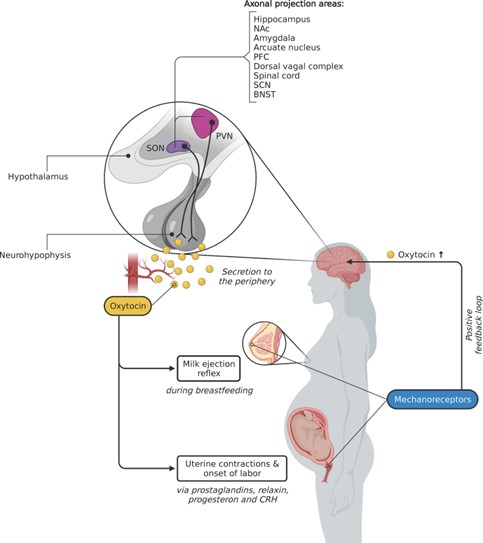A nurse is caring for a client who has postpartum hemorrhage and is receiving IV fluids and blood products.
Which of the following interventions should the nurse include in the plan of care? (Select all that apply.)
Monitor intake and output
Elevate the head of the bed
Apply oxygen via nasal cannula
Insert a nasogastric tube E
Administer pain medication as needed
Correct Answer : A,B,C
The correct answer is choice A, B and C. The nurse should monitor intake and output to assess the client’s fluid status and blood loss.
The nurse should elevate the head of the bed to reduce the risk of hypovolemic shock and improve tissue perfusion.
The nurse should apply oxygen via nasal cannula to increase oxygen delivery to the vital organs and prevent hypoxia.
Choice D is wrong because inserting a nasogastric tube is not indicated for a client who has postpartum hemorrhage.
A nasogastric tube is used to decompress the stomach or administer medications or feedings in some conditions.
Choice E is wrong because administering pain medication as needed is not a priority intervention for a client who has postpartum hemorrhage.
Pain medication can mask the signs of shock and lower the blood pressure further.
The nurse should focus on restoring the blood volume and preventing complications.
Nursing Test Bank
Naxlex Comprehensive Predictor Exams
Related Questions
Correct Answer is C
Explanation
The correct answer is choice C. Misoprostol (Cytotec).This medication is used to prevent postpartum hemorrhage (excessive bleeding after delivery) in women with placenta previa.Placenta previa is a condition where the placenta covers the opening of the cervix and can cause severe bleeding during pregnancy.
Choice A is wrong because Methylergonovine (Methergine) is a medication that stimulates uterine contractions and can increase bleeding in women with placenta previa.
Choice B is wrong because Carboprost tromethamine (Hemabate) is also a medication that causes uterine contractions and can worsen bleeding in women with placenta previa.
Choice D is wrong because Terbutaline (Brethine) is a medication that relaxes uterine muscles and can delay labor, but it does not prevent postpartum hemorrhage in women with placenta previa.
Normal ranges for blood loss after delivery are less than 500 mL for vaginal delivery and less than 1000 mL for cesarean delivery.

Correct Answer is ["B","D","E"]
Explanation
The correct answer is choice B, D and E. The nurse should include the following information in the teaching:
• Increase iron-rich foods in the diet.This can help replenish the blood loss and prevent anemia.
• Report any signs of infection, such as fever or foul-smelling lochia.These can indicate a serious complication that needs immediate medical attention.
• Resume sexual intercourse as soon as desired.There is no evidence that sexual activity increases the risk of bleeding or infection after postpartum hemorrhage.
Choice A is wrong because increasing fluid intake to at least 3 L per day is not necessary for postpartum hemorrhage recovery.Fluid intake should be based on thirst and urine output.
Choice C is wrong because avoiding strenuous activities for 6 weeks is not a specific recommendation for postpartum hemorrhage.The nurse should advise the client to gradually resume normal activities as tolerated and to rest when needed.
Whether you are a student looking to ace your exams or a practicing nurse seeking to enhance your expertise , our nursing education contents will empower you with the confidence and competence to make a difference in the lives of patients and become a respected leader in the healthcare field.
Visit Naxlex, invest in your future and unlock endless possibilities with our unparalleled nursing education contents today
Report Wrong Answer on the Current Question
Do you disagree with the answer? If yes, what is your expected answer? Explain.
Kindly be descriptive with the issue you are facing.
